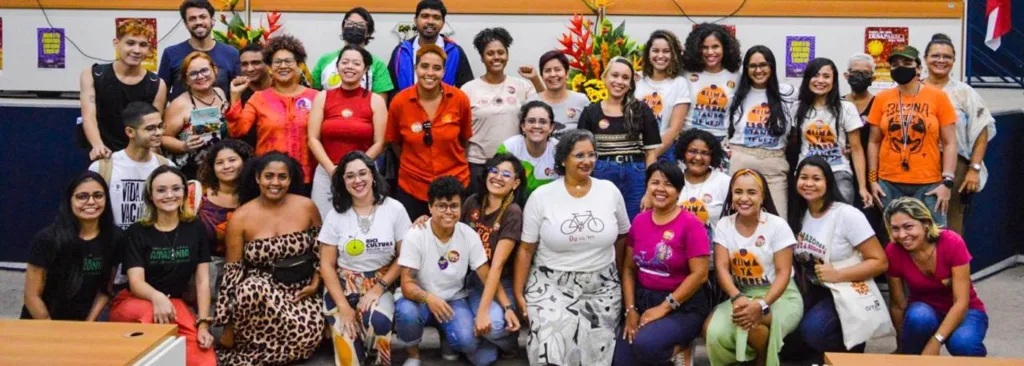Address by Edwin Huizing at the City Maker session organised by Hivos during the SIX Wayfinder conference on social innovation in London on 16 and 17 February.
Today we celebrate the social innovation field’s tenth birthday. To our mind this should start with celebrating the ingenuity and inspiration of people to face power in creative ways. A major achievement of the social innovation field is that it has built a platform for frontrunners that come from all segments of society: hacktivists, community leaders, urban planners, progressive funders, visionary mayors. In the process, it has shattered barriers, between North and South, between East and West, between bottom up – top down. So, going forward, the question is on which areas to focus our attention regarding social innovation for the next ten years?
Closing civic space and its impact on potential for social innovation
The context we operate in, is changing rapidly. While the social innovation sector is advancing the space for civil society is shrinking. Not only in the countries that have repressive governments, but also in democracies with longstanding traditions of supporting freedom of expression. They are framed under guise of national security, but largely show the geopolitical and ideological transition that we are part of. Human rights defenders, advocacy organizations and groups that work on sexual rights and diversity issues are most targeted.
For instance, the effect of Donald Trump barring international non-governmental organizations that perform or promote abortions from receiving US government funding has a major effect on women’s health in developing countries. We are proud that the Dutch government decided to stand up and create a fund to gain access to contraceptives, clear information and safe abortion. But in many instances, there is no fallback scenario. In Uganda, Zimbabwe, Ecuador, Bolivia and Nicaragua, even one of the basic rights – the right to assembly – is under threat. In over 70 countries being gay is a criminal offence.
So the premise of the social innovation field that everyone is allowed to use innovations to bring about systemic change of their inspiration and choosing is problematic, especially when shrinking civic space is obstructing social change for large groups. Social Innovation should not be for only the happy few, which brings me to the second issue.
Can we make social innovation more inclusive?
While there is an increased interest in an agenda that aims to rectify institutional failures, the solutions offered often reproduce the power structures that it wants to change. This approach towards fixing global problems also tends to ignore the precarious majority that stands to benefit most. How can we ensure that change makers who either originate from or empower vulnerable, isolated, forgotten groups visibly emerge into the limelight? They are reclaiming public space, providing basic services, changing the rules of the game in profound ways. Think of City Makers, who use innovative ways to make cities more livable, resilient, green and sustainable for all inhabitants.
So how we can we make the social innovation field more robust and inclusive?
Hivos commits to two efforts for the next decade of social innovation:
Continuing to strengthen connections and collaborations across different spheres of activism and innovation
This is where the social innovation field can continue to be transformative. This also leads me to explaining the picture that is shown on the screen.
This photo taken by Augusto Escribens shows the Amarakaeri people in Peru testing our first drone. They are part of a new program that Hivos and Greenpeace have launched together with indigenous groups from the Amazon rainforest to stop deforestation (with the support from the Dutch Postcode Lottery). It will combine modern technologies, such as satellites, drones and tablets, with the centuries-old knowledge of the Indigenous inhabitants of the Amazon. We will bring together researchers, independent data providers, indigenous and traditional communities, environmental activists, technology developers and law enforcement agencies. Indigenous and traditional communities are also key partners in the management of this program, and not mere beneficiaries.
Focusing on new solutions and approaches that empower vulnerable, isolated, forgotten groups
There are many groups that are not reached by current interventions. Particularly marginalized and discriminated groups, such as people with disabilities, lesbian and gay people, young women and indigenous groups, are often left out. In the development sector, we have learned this the hard way, resulting in many marginalized groups still being denied basic rights. For Hivos, being inclusive is a guiding, although challenging, principle.
An example is our work for over 20 years to support LGBTI communities worldwide, now also focusing on HIV Aids and Human Rights for key populations.
Much more modest in scale, is our work around migrant domestic workers that work in the Gulf Region. Each year, thousands of Asian and African women migrate to become a domestic worker in the Gulf region, to make a living for their families. Unfortunately for many, the migration journey is full of deceptions, abuse and isolation. And once these women are within the homes of employment we can’t reach them as they are not allowed to go outside and their phones – if they have them – are confiscated. A major challenge indeed, but not impossible. And the social innovation field is a great resource that we use to ensure that migration can turn into a success for these women, but wouldn’t it be better if the social innovation field itself is more inclusion focused?
This includes strengthening narratives that promote a bottom-up way of solving our toughest challenges, and resist those that are top-down, too big to fail and solutionist. As always, at the end of the day what truly inspires us is the ingenuity and inspiration of people to face power in creative ways.




